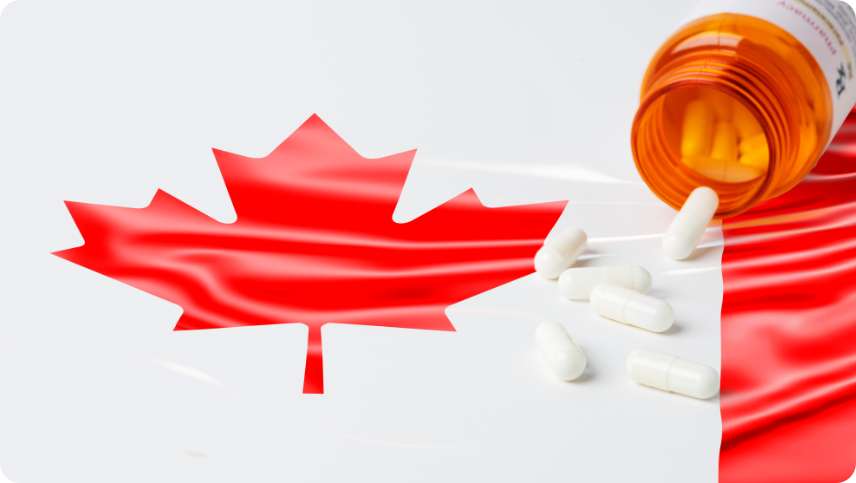
Fertility medications spanning from Clomid to Gonal-F, Menopur, Progesterone, and Premarin can all vary widely in their average costs. Generally, all-in costs can be far different than just single medication costs. For example, a patient requiring treatment with Gonal-F® RFF may require 300 IUs to 600 IUs per day, with the average patient requiring four pens (or injections) totalling anywhere from $14,868 to $23,796. Meaning, when breaking down the average cost of IVF medications, we need to consider their all-in cost for treatment as well as their single dose cost. On average, that can range anywhere from $18,000 to $42,000 per patient.
Key Takeaways
Gonal-F® RFF, Follistim, Menopur, Repronex, Pregnyl, Ovidrel, and Profasi are all the most popular IVF medications on the market. Which can all vary widely in their price. IVF medications are usually classified into FSH (follicle stimulating hormone), hCG (human chorionic gonadotropin), GnRH (gonadotropin-releasing hormone), and menotropins (containing both FSH and LH) groups.
Single-dose IVF medications cost can range anywhere from as little as $37.03 to $2,615.42 on the low and high side. With the most expensive IVF medication being Gonal-F® RFF and the lowest being Estrace (which is used during in vitro fertilization to thicken the uterine lining to help with embryo implant) at $37.03.
To get up to 80% off your IVF medications, please visit our resource here. DrugMart sells Gonal-f® RFF redi-ject pens for as low as $418.50, which is more than 80% off average prices ($3,200 in savings).
Overview of IVF Medication Costs
Here’s a price breakdown of the most common IVF medications and their single dosage lowest price. However, if you’re looking for a total estimated “all-in” cost for treatment, compare to the table chart below this one.
Group | Brand Name | Dosage | Quantity | Lowest Price |
FSH | Gonal-F | 75 IU Powder | 1 vial | $112.99 |
| Gonal-F | 450 IU | 1 vial | $459.59 |
| 300 IU | 1 vial | $316.53 | |
| Gonal-F Pen | 900 IU/1.5mL | 1 syringe | $2,615.42 |
Menotropins | 75 IU | 10 mL | $638.00 | |
hCG | Pregnyl | 10,000 IU | 1 vial | $112.00 |
| Novarel | 5,000 IU | 1 vial | $105.50 |
| Ovidrel | 250 mcg/0.5 mL | 1 prefilled syringe | $212.00 |
GnRH | Lupron Depot | 3.75 mg | 1 kit | $875.00 |
| Lupron Depot | 11.25 mg | 1 kit | $2,625.00 |
| Cetrotide | 0.25 mg | 1 vial | $183.00 |
| Ganirelix | 250 mcg/0.5 mL | 1 prefilled syringe | $147.00 |
Estrogen | Divigel (Sandrena Gel) | 0.1% (0.5mg) | 28 sachets | $67.85 |
| Estrace | 0.05 mg | 100 tablets | $37.03 |
| 0.1% (0.25mg) | 30 sachets | $73.50 | |
| 0.1% (1mg) | 91 sachets | $145.43 | |
| 0.3 mg | 28 tablets | $67.89 | |
Progesterone | 100 mg | 100 capsules | $104.00 | |
| 100 mg | 30 capsules | $57.15 | |
Ovulation Inducer | Clomid | 50 mg | 30 tablets | $183.00 |
| 50 mg | 30 tablets | $77.23 |
Average “All-In” Costs for Treatment Based on IVF Medications
Based on the average patient cycle requirement, here is the average “all-in” costs for IVF medications based on their average price:
Group | Brand Name | Dosage | Quantity | Average Cycle Requirement | All-in Cost |
FSH | Gonal-F | 75 IU Powder | 1 vial | 20 vials | $2,259.80 |
| Gonal-F | 450 IU | 1 vial | 7 vials | $3,217.13 |
| Gonal-F RFF Redi-Ject | 300 IU | 1 vial | 10 vials | $3,165.30 |
| Gonal-F Pen | 900 IU/1.5mL | 1 syringe | 3 syringes | $7,846.26 |
Menotropins | Menopur | 75 IU | 10 mL | 20 vials | $12,760.00 |
hCG | Pregnyl | 10,000 IU | 1 vial | 1 vial | $112.00 |
| Novarel | 5,000 IU | 1 vial | 2 vials | $211.00 |
| Ovidrel | 250 mcg/0.5 mL | 1 prefilled syringe | 1 syringe | $212.00 |
GnRH | Lupron Depot | 3.75 mg | 1 kit | 1 kit | $875.00 |
| Lupron Depot | 11.25 mg | 1 kit | 1 kit | $2,625.00 |
| Cetrotide | 0.25 mg | 1 vial | 7 vials | $1,281.00 |
| Ganirelix | 250 mcg/0.5 mL | 1 prefilled syringe | 7 syringes | $1,029.00 |
Estrogen | Divigel (Sandrena Gel) | 0.1% (0.5mg) | 28 sachets | 1 box | $67.85 |
| Estrace | 0.05 mg | 100 tablets | 1 bottle | $37.03 |
| Divigel Gel | 0.1% (0.25mg) | 30 sachets | 1 box | $73.50 |
| Sandrena Gel | 0.1% (1mg) | 91 sachets | 1 box | $145.43 |
| Premarin | 0.3 mg | 28 tablets | 1 box | $67.89 |
Progesterone | Prometrium | 100 mg | 100 capsules | 2 bottles | $208.00 |
| Prometrium | 100 mg | 30 capsules | 3 bottles | $171.45 |
Ovulation Inducer | Clomid | 50 mg | 30 tablets | 1 bottle | $183.00 |
| Clomid (Clomiphene Citrate) | 50 mg | 30 tablets | 1 bottle | $77.23 |
Why IVF Medications Are So Expensive
There are a number of factors that are influencing the overall price of IVF medications in the United States. Some of those factors include the following:
1. Production Process
The production process of IVF medications often requires the use of living cells, regulatory compliance, and high production failure rates that influence the overall cost of the medication.
Cell line development: Producing biologics like follicle-stimulating hormone (FSH) or human chorionic gonadotropin (hCG) these pharmaceutical scientists have to create a cell line capable of producing the desired protein. The process often involves a healthy amount of engineering, where these genes are encoded to target the protein inserted into the cells. Developing these cell lines can usually take anywhere from a few months to a few years.
Bioreactor cultivation: Once the stable cell line is produced, the cells are then grown into bioreactors, which are large and sterile vessels that are used to maintain precise environmental conditions like temperature, pH, and varying nutrient levels. Maintaining the bioreactors is extremely costly, requiring stringent sterility and quality controls.
Purification process: Once these proteins are produced, they have to be extracted and purified from the cell culture medium. This procedure requires a number of steps: filtration, chromatography, and other techniques used to isolate the protein while removing impurities.
Regulatory compliance: Heavy regulatory compliance of these medications can also result in more required costs of production. The FDA and EMA often oversee these medications regulatory environments for testing of purity, potency, and stability.
Production failure rates: These biologic manufacturing processes lead to higher production failures, like contaminations, unstable cell lines, and generally insufficient yields.
Cold chain storage: Biologics are sensitive to temperature fluctuations and require refrigeration through the supply chain. This process is called cold chain logistics, which includes temperature-controlled packaging, storage, and transportation.
R&D costs: The overall research and development process for biologics is lengthy and expensive for manufacturers. Often requiring (in the billions) of dollars being invested before a drug reaches the market. These costs are often recouped on the demand level of the medication.
Related: Menopur Average Cost (Guide)
2. High Demand
From 2014 to 2024, IVF medication costs have risen by more than 84%. The high demand of IVF medications along with the lower fertility rates in the United States and the high production costs have led to higher pricing on the demand-level (for the customer or consumer) than normal.
This price increase, when compared to the list prices of all prescription medications is quite drastic. Other prescription medications have only risen by 37% in that same time period, while IVF medications have outpaced that by around 47%.
3. Limited Insurance Coverage
Insurance coverage of IVF medications is complex. And can vary based on a number of factors, including the state that you live in. The reason comes down to the cost of treatment and how each state considers infertility classified and defined. As well as regulation on a state-by-state basis.
This heavy regulation has led patients to either have to endure large out-of-pocket expenses for any type of IVF treatment or move states, choose other insurers, or seek other employment that assists in infertility treatments.
For more information about coverage in your state visit the National Infertility Associations website right here that lists each state's eligibility as well as their individual statutes to better understand what’s covered (and not covered) in your area.
4. Cost of Procedures
High costs of procedures can have a large influence on the overall price of a successful fertilization journey. Included in your treatment may be anesthesia, ultrasounds, lab work, and the cost of paying embryologists that are associated with monitoring, growing, and preserving embryos.
Related: Gonal-F RFF Pen Price (Guide)
How to Calculate the Total Cost of IVF Treatment
Because each patient may require different types of treatment, it can be complex to calculate the total “all-in” cost for a patient. However, fertility specialists can often help to give you a comprehensive plan in determining the best path forward for you given your age, health, and overall conditions.
Fertility specialists are often offered by local hospitals or through fertility clinics available in your area. Speak with your insurance company before seeking the time of a fertility specialist as they can often advise you on the best location to visit where your insurance covers your initial consultation and treatment plan. WebMD has put together a helpful guide on choosing a fertility clinic to work with.
However, to get a general calculation of your overall fees, consider the following factors:
Base clinic fee: The baseline clinic fee covers the core IVF procedures like monitoring, egg retrieval, embryo culture, and embryo transfer.
Medications: The cost of fertility drugs required to stimulate successful ovulation, which can vary based on your treatment plan.
Anesthesia fees: Costs associated with sedation during egg retrieval. To get a total cost of this contact the local clinic or hospital that you plan to work with to get an estimate.
Laboratory fees: The costs associated with handling eggs and sperm in the lab, which includes fertilization and embryo development.
ICSCI (intracytoplasmic sperm injection): An optional technique that may be suggested to you where a single sperm is injected directly into the egg.
PGT (preimplantation genetic testing): An optional technique where the genetic screening of embryos is used to identify potential chromosomal abnormalities.
Assisted hatching: An optional procedure that’s used to help the embryo implant in the uterine lining.
Donor sperm/egg: If required, the cost associated with acquiring a donor sperm or eggs.
Embryo cryopreservation: The cost of freezing extra embryos for future use.
Number of IVF cycles needed: Many patients require multiple IVF cycles to achieve pregnancy. Ensure that you’re calculating the total average cycle requirement price (listed in the chart above).
To get up to 80% off your IVF medications, please visit our resource here. DrugMart sells Gonal-f® RFF redi-ject pens for as low as $418.50, which is more than 80% off average prices ($3,200 in savings).
Rough Calculations of “All-In” Price
To get a general cost estimate based on historical baselines in the United States, we can assume that each average IVF cycle price is roughly $3,000 to $7,000. And the average patient in the United States requires six cycles to have a successful life birth. Making the “napkin math” estimate of achieving a successful pregnancy anywhere from $18,000 to $42,000. With much of this cost coming from out-of-pocket expenses.
Common Questions
Questions and answers about IVF medication costs:
Does Medicare cover IVF treatment?
Medicare may cover some parts of your overall treatment and prescriptions. However, it’s important to speak with your fertility specialist or with Medicare directly to address your treatment plan and coverage that’s available. Key factors usually include:
Medicare Coverage for Infertility Treatments: Medicare does not explicitly provide coverage for fertility treatments, including IVF, intrauterine insemination (IUI), or egg freezing. Fertility treatments are generally excluded because they are categorized as elective procedures, not essential medical care for Medicare’s typical demographic.
Medications for Fertility Treatment: Medicare Part D, which covers prescription drugs, does not usually cover fertility medications. However, it may cover drugs used for related medical conditions, like hormonal imbalances, if prescribed for a covered condition rather than explicitly for infertility. However, Medicare Part A and Part B do not cover your prescription medications.
Diagnostic Services: Medicare may cover diagnostic tests or procedures related to infertility, such as blood tests, ultrasounds, or hysterosalpingograms (HSG), if deemed medically necessary to diagnose an underlying condition that may also affect general health (e.g., hormone imbalances, polycystic ovary syndrome, or endometriosis).
Medicare and Younger Individuals with Disabilities: Individuals under 65 who qualify for Medicare due to disabilities may still face the same restrictions on fertility treatment coverage. Fertility-related services are not typically included under Medicare's benefits, even for this group.
You can check if you have Medicare (Part B) by looking at the lower left corner of your red, white, and blue Medicare card that you were given:
Part A: "Hospital (Part A)" will be printed on the card.
Part B: "Medical (Part B)" will be printed on the card.
If Part B is printed on your Medicare card, you are covered and should read Medicare Benefits: Chapter 15 for more information.
Are there any alternative financing options for IVF treatment?
Due to the high out-of-pocket expenses for many patients in the United States, more options have surfaced to help patients with their treatment. Including:
Private Health Insurance Plans: Some private insurance plans, especially in states with fertility mandates, may cover IVF or other fertility treatments. Coverage varies by plan and state.
Grants and Financial Aid: Many non-profit organizations provide grants or financial assistance for fertility treatments to individuals who meet specific criteria.
Fertility Clinics with Financing Options: Many fertility clinics offer payment plans or financing options to help make treatments more affordable.
CIPA-Certified Canadian Pharmacies Provide Safe, Effective Prescription Drugs https://Drugmart.com is a CIPA-member Canadian prescription referral service with hundreds of medications at incredible savings. We source from reputable pharmacies located in the United Kingdom, New Zealand, Australia and Canada. We offer non-prescription Canada drugs and pet medications, too!
Rest assured, even though you may receive your medication from a country other than Canada, because your order is placed through https://Drugmart.com - which is a CIPA sanctioned seller - it's just as safe as if it were shipped directly from our Canadian pharmacy.
If you need expert advice, https://Drugmart.com can connect you with a team of licensed pharmacists to address your concerns. Our customer service team will help with any questions you may have. You can also check out our list of FAQs to get answers to the most-asked questions we receive. Find your prescription, create an account and start saving on your meds from https://Drugmart.com today!
Sources
RESOLVE: The National Infertility Association. (n.d.). Insurance coverage by state. Retrieved from https://resolve.org/learn/financial-resources-for-family-building/insurance-coverage/insurance-coverage-by-state/
Fertility Savings. (n.d.). How it works. Retrieved from https://www.fertilitysavings.com/how-it-works.html EMD Serono. (n.d.). Get help paying for your medication. Retrieved from https://www.emdserono.com/us-en/patients-and-caregivers/get-help-paying-for-your-medication.html
Al-inany, H., et al. (2016). Gonadotrophin‐releasing hormone antagonists for assisted reproductive technology. Cochrane Database of Systematic Reviews.
Conrad, M. (2023). How much does IVF cost? Forbes.





